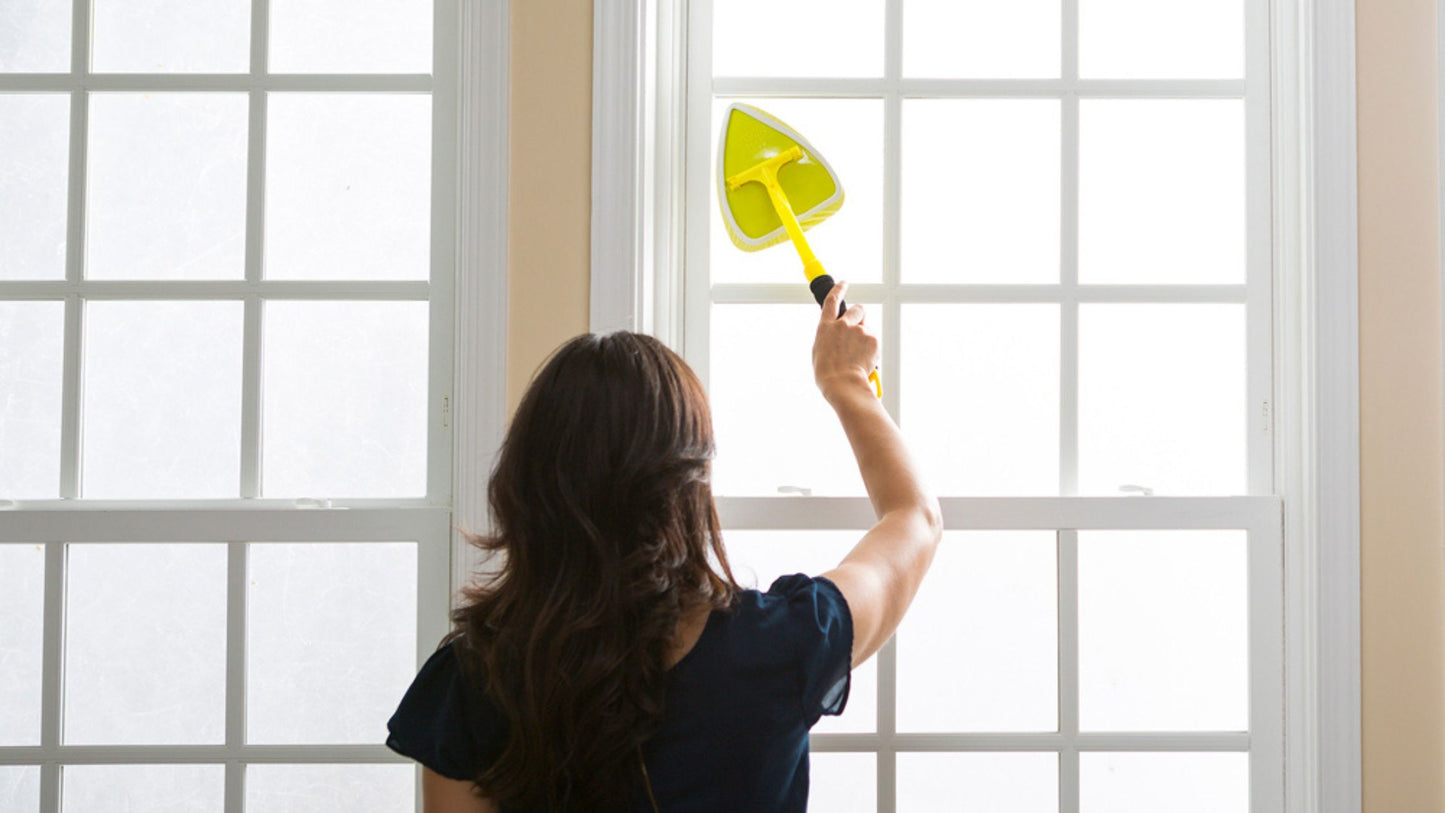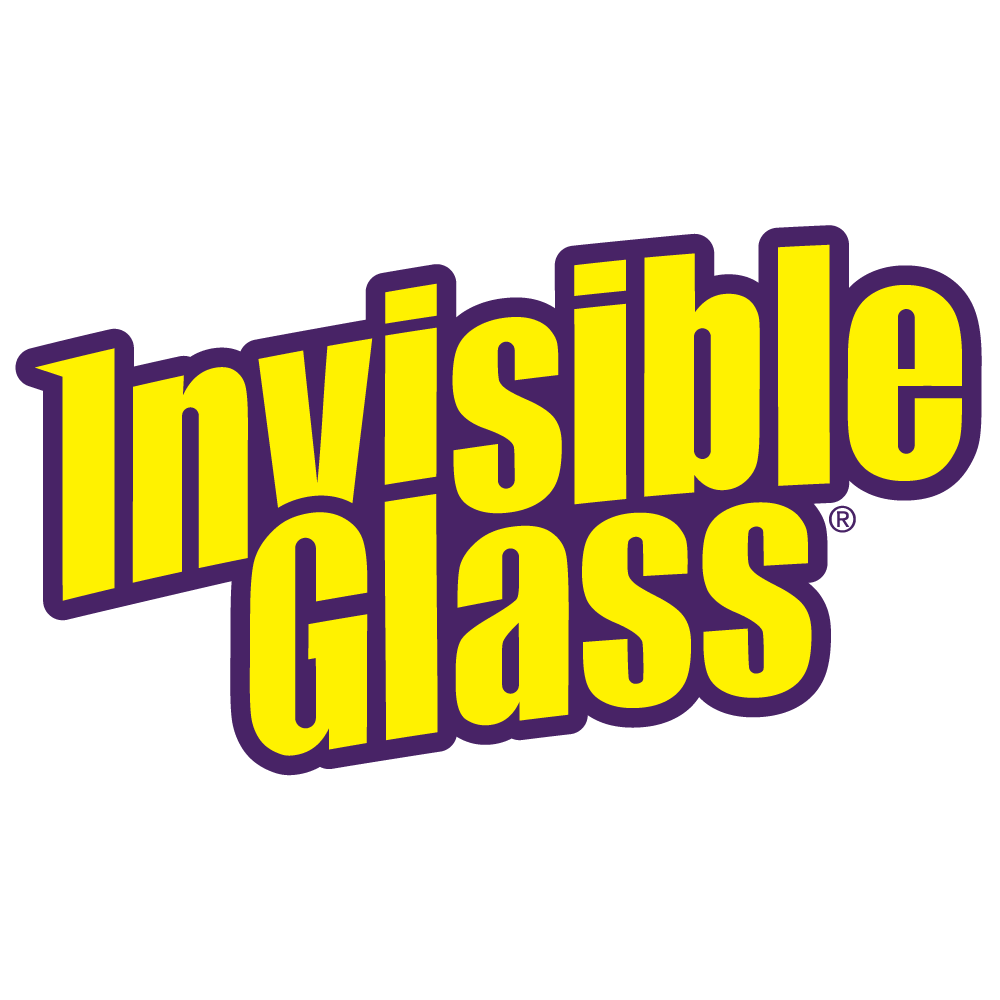
Sometimes, the simple choices are the ones we unknowingly make incorrectly. Cleaning windows may look easy, but a few techniques and tips can go a long way in delivering an invisible glass. In this post, we’ll touch on the step-by-step process of cleaning dirty windows and provide some common mistakes to avoid.
To clean dirty windows: Pull back any curtains or blinds, spray a thin, even layer of a streak-free glass cleaner on the window, and wipe top-to-bottom using a microfiber towel.
What You’ll Need
To clean dirty windows, you’ll need the following products:
- A streak-free glass cleaner
- Microfiber towels
Optionally, you can use a Reach & Clean tool, an excellent choice for those on the shorter side or who experience neck, back, or shoulder pain. The Reach & Clean tool uses washable, reusable, and interchangeable cloth bonnets that are easy to swap in and out as needed.
Streak-Free Glass Cleaners
The type of glass cleaner you choose will make or break your chance of crystal clear results. We recommend selecting a streak-free glass cleaner with no scents or dyes. Glass cleaners containing fragrances or dyes can leave behind a film on your glass. If you need a trustworthy glass cleaner, consider Invisible Glass. Invisible Glass is scent- and dye-free, making it a safe choice for those needing a powerful, reliable glass cleaner.
Microfiber Towels
Most will grab any handy towel for cleaning windows, but the cloth you use makes a difference. We specifically recommend microfibers engineered for absorbency and softness. They are the perfect product to use when cleaning windows. Microfiber towels are reusable and environmentally friendly, but users must clean them properly to maintain their effectiveness.
Now, let’s address those dirty windows:
Pull back any curtains or blinds.
Before applying any cleaner, pull the blinds up or pull the curtains to the side. Glass cleaners use strong chemicals that can stain or damage window treatments. Also, moving window coverings aside will give you full access to the entire surface area, making cleaning easier.
Spray a thin, even layer of streak-free glass cleaner onto the window.
Take your streak-free glass cleaner and spray a thin, even layer across the window. If you’re working with a larger surface, you might want to split the window into halves or quarters to avoid the glass cleaner evaporating too quickly.
Start with a conservative amount of cleaner, and add more as needed. Too much cleaner can leave excess behind, causing streaks or spots to form.
Wipe from top-to-bottom using a microfiber towel.
Begin cleaning near the top of the window and work your way down. We recommend wiping in an S-shape; this technique prevents smearing dirt around the glass. Using a dirty microfiber will simply spread dirt around, so swap it out for a fresh cloth if you notice your microfiber towel getting dirty or damp.
If, after wiping, you notice lingering dirt or film, reapply glass cleaner and continue swabbing the surface until it is clear.
Mistakes to Avoid While Cleaning Your Windows
Here are a few tips to help you get fast, crystal-clear window-cleaning results.
Sunny days aren’t the best for cleaning windows.
While sunny days make streaks easy to see, they aren’t the best days to clean your windows. Warm days may cause the glass cleaning solution to evaporate too quickly, leaving smudges and smears. If you’re working in warm weather, wait for cloud coverage or until sundown. Or, you can also work on the shady side of the house first and wait for the sun to pass over to clean the rest of your windows.
Glass cleaner makes (or breaks) the results.
Don’t skimp on your window cleaning product; A quality glass cleaner is critical to achieving a clear window. Glass cleaners with added dyes or scents often leave films and streaks behind. Do some research before buying, and ensure you track down a quality, streak-free glass cleaner.
Inside/Out Cleaning
Windows get much dirtier on the outside, so it’s good to clean their exteriors every few months. Use vertical strokes for cleaning the interior glass and horizontal strokes on the outside; then, if any streaks appear, you’ll easily be able to tell which side they’re on.
Squeegees aren’t the best.
Water blades are great for cleaning automobile windshields or other glass surfaces, but you’ll want to stay away from them when cleaning household glass. Water will get everywhere if you use them; squeegees can be borderline impossible to use on smaller windows.
Keep your windows invisible.
While window cleaning is a relatively simple task, the above methods will improve your results. Remember to follow this process: Pull back curtains or blinds, spray a thin, streak-free glass cleaner on the window, and wipe top-to-bottom using a microfiber towel. You’ll be seeing clearly in no time. Enjoy the view!



